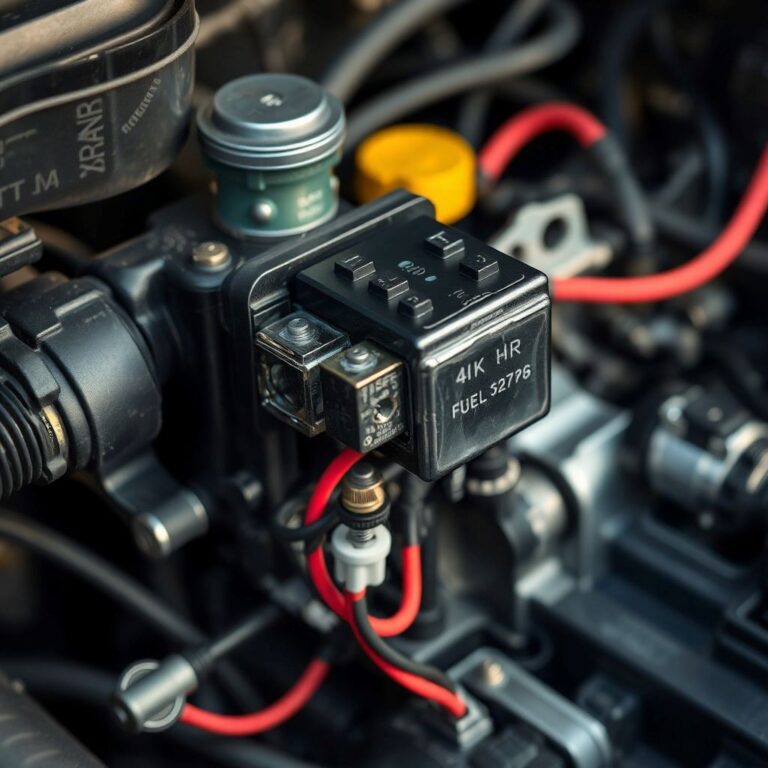Your car’s oxygen (O2) sensor plays a vital role in keeping your engine running efficiently and reducing harmful emissions. When this small but critical component starts to fail, you may wonder whether it’s safe to keep driving. At Trade Car Hub, we understand the importance of maintaining your vehicle to avoid costly repairs and ensure safety on the road. A bad O2 sensor can affect your car’s performance, fuel economy, and even its longevity. This article explores the risks of driving with a faulty O2 sensor, the warning signs to watch for, and what steps you should take to address the issue.
What Is an O2 Sensor and Why Does It Matter?
An O2 sensor measures the proportion of oxygen in your car’s exhaust gases, sending this data to the engine control unit (ECU). The ECU uses this information to adjust the air-fuel mixture for optimal combustion. A properly functioning O2 sensor ensures your engine runs efficiently, maximizes fuel economy, and minimizes emissions. However, when the sensor fails, it can disrupt this balance, leading to a range of problems.
If you’re asking, “Can you drive with a bad O2 sensor?” the short answer is that it’s possible but not advisable. Driving with a faulty O2 sensor can lead to reduced performance and potential damage to other engine components. For more detailed insights, check out this guide on can you drive with a bad O2 sensor from Trade Car Hub, which outlines the risks and recommendations for addressing this issue.
Signs of a Bad O2 Sensor
A failing O2 sensor often triggers noticeable symptoms. Recognizing these signs early can prevent further damage and save you from expensive repairs. Here are the most common indicators:
- Check Engine Light: The most frequent sign of a bad O2 sensor is an illuminated check engine light. Your car’s onboard diagnostics system (OBD-II) detects irregular sensor readings and triggers the warning.
- Poor Fuel Economy: A faulty sensor may cause the engine to burn more fuel than necessary, leading to decreased gas mileage.
- Rough Idling or Stalling: If the sensor sends incorrect data, the engine may struggle to maintain a steady idle or even stall unexpectedly.
- Failed Emissions Test: A bad O2 sensor can cause your vehicle to produce higher emissions, leading to a failed emissions test.
- Engine Misfires or Hesitation: Incorrect air-fuel ratios can result in misfires, sluggish acceleration, or hesitation during driving.
If you notice any of these symptoms, it’s wise to have your vehicle inspected promptly. Ignoring these signs could lead to more severe issues down the road.
Can You Drive With a Bad O2 Sensor?
While you can technically drive with a faulty O2 sensor, doing so comes with risks. The sensor’s failure disrupts the engine’s ability to maintain an optimal air-fuel mixture, which can cause several problems. For instance, a rich fuel mixture (too much fuel) can damage the catalytic converter, a costly component to replace. According to Car and Driver, a damaged catalytic converter can cost between $1,000 and $3,000 to repair, depending on the vehicle.
Additionally, driving with a bad O2 sensor can reduce fuel efficiency, meaning you’ll spend more at the pump. Over time, the strain on the engine may lead to further wear and tear, increasing the likelihood of breakdowns. Therefore, while short trips may not cause immediate harm, prolonged driving with a faulty sensor is not recommended.
Risks of Ignoring a Bad O2 Sensor
Ignoring a failing O2 sensor can have serious consequences for your vehicle and your wallet. Here are some potential risks:
- Catalytic Converter Damage: A bad O2 sensor can cause unburned fuel to enter the catalytic converter, leading to overheating and failure.
- Increased Emissions: A faulty sensor can increase harmful emissions, contributing to environmental pollution and potentially causing your vehicle to fail emissions tests.
- Engine Damage: Prolonged driving with incorrect fuel mixtures can stress engine components, leading to costly repairs.
- Reduced Performance: You may experience sluggish acceleration, poor handling, or difficulty maintaining speed, making driving less safe and enjoyable.
To avoid these issues, address a bad O2 sensor as soon as possible. A timely repair can save you from more extensive damage and keep your car running smoothly.
How to Diagnose a Bad O2 Sensor
If you suspect your O2 sensor is failing, a proper diagnosis is essential. Start by using an OBD-II scanner to retrieve diagnostic trouble codes (DTCs) from your vehicle’s ECU. Common codes related to O2 sensor issues include P0130 to P0167. These codes indicate problems with sensor performance or circuit malfunctions.
Alternatively, take your car to a trusted mechanic who can perform a thorough inspection. They may use specialized tools to test the sensor’s voltage output and response time. In some cases, a visual inspection can reveal signs of wear, such as contamination or physical damage to the sensor.
How to Fix a Bad O2 Sensor
Once diagnosed, replacing a bad O2 sensor is often the best solution. Here’s what you need to know about the repair process:
- DIY Replacement: If you’re mechanically inclined, you can replace the O2 sensor yourself with basic tools. Most sensors are accessible under the hood or along the exhaust system. However, ensure you purchase the correct sensor for your vehicle’s make and model.
- Professional Repair: A mechanic can replace the sensor quickly, typically within an hour. The cost of replacement, including parts and labor, ranges from $100 to $300, depending on your location and vehicle type, as noted by Consumer Reports.
- Regular Maintenance: To prevent future issues, maintain your vehicle according to the manufacturer’s recommendations. Regular tune-ups and inspections can catch problems early.
After replacing the sensor, clear any diagnostic codes and test-drive the vehicle to ensure the issue is resolved.
How Long Can You Drive With a Bad O2 Sensor?
The amount of time you can safely drive with a bad O2 sensor depends on the severity of the issue. For minor sensor malfunctions, you may be able to drive for a short period without immediate damage. However, if the sensor is significantly affecting the air-fuel mixture, continuing to drive could harm the engine or catalytic converter within days or weeks.
To stay safe, address the problem within a few days of noticing symptoms. If you’re unable to visit a mechanic immediately, limit your driving to essential trips and monitor your vehicle’s performance closely.
Preventing O2 Sensor Issues
Preventive maintenance can extend the life of your O2 sensor and reduce the likelihood of failure. Here are some tips:
- Use high-quality fuel to minimize contamination of the sensor.
- Follow your vehicle’s maintenance schedule, including regular oil changes and air filter replacements.
- Address engine issues promptly to prevent stress on the O2 sensor.
- Avoid driving through deep water, as submersion can damage the sensor.
By taking these steps, you can keep your O2 sensor in good condition and avoid unexpected problems.
Read More Also: Considerations When Choosing an Accountant
Conclusion
Driving with a bad O2 sensor is not a wise choice, as it can lead to reduced fuel efficiency, increased emissions, and potential damage to critical engine components like the catalytic converter. Recognizing the signs of a failing sensor—such as a check engine light, poor gas mileage, or rough idling—can help you address the issue before it escalates. While short-term driving may be possible, the risks of ignoring the problem outweigh the convenience. For a reliable and cost-effective solution, have your O2 sensor inspected and replaced as needed. By staying proactive, you can keep your vehicle running smoothly and avoid costly repairs.
Read More Also: Find the Cheapest iPhone: Global Price Comparison
Frequently Asked Questions
-
How do I know if my O2 sensor is bad?
Common signs include a check engine light, poor fuel economy, rough idling, failed emissions tests, or engine misfires. Use an OBD-II scanner to confirm.
-
How much does it cost to replace an O2 sensor?
The cost typically ranges from $100 to $300, including parts and labor, depending on your vehicle and location.
-
Can a bad O2 sensor damage my engine?
Yes, a faulty sensor can cause improper fuel mixtures, leading to engine stress and potential damage over time.
-
How long does an O2 sensor last?
Most O2 sensors last between 60,000 and 100,000 miles, but this varies based on driving conditions and maintenance.
-
Can I clean an O2 sensor instead of replacing it?
Cleaning is rarely effective for a failing O2 sensor. Replacement is usually the best solution for reliable performance.

















+ There are no comments
Add yours